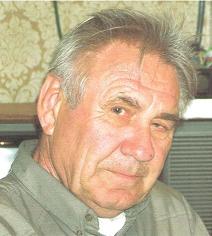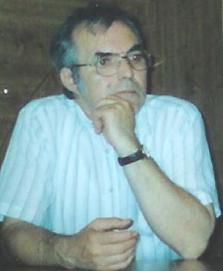| Helping to Remember Jewish Nagymegyer | |||
|
This page acknowledges two individuals, both non-Jewish residents, who have made considerable efforts to document the former Jewish community of Nagymegyer and encourage others to remember the people, their contributions, and the horror of the Holocaust: Mr. Alexander Gerhát and Mr. László Varga. Mr. Alexander Gerhát Alexander Gerhát was a TV technician who excelled in his eloquence, a Nagmegyeri citizen. In the early 1990s he got in touch with some Megyeri survivors in Israel. He brought up the idea of some memorial in the town to commemorate the victims. He asked for ideas, and sent his first draft of the Map of Jewish homes in 1944. The people who received his letter rejected his initiative because the Megyeri population had ejected the Jews and there was no way for reconciliation. Some even argued that he was after money.
When I became aware of this correspondence, I insisted on contacting him to check his personality and intentions. Thus began our connection. We had a most vivid correspondence (I have preserved a quite bulky folder of our mutual letters) His attitude was humanistic; he denounced the Shoah (He was a child of only 9-10 years of age in 1944). When we first visited the town in 1992-3), he and his wife hosted us most cordially. He handed me a present, a list of all the local Jewish families, marking the survivors, and asked me to revise it and send back the revised version to him. Since I was there neither at the time of the deportation, nor when the survivors returned, I had to ask for aid from some of my friends who were among the survivors. When the list was complete to the best of our knowledge, I sent it back to him. This became the basis of my list of the Megyeri victims I have sent to Yad Vashem and to JewishGen, to Mrs. Carol Robinson, along with a short history of My Shtetl. During the years of our correspondence, Mr. Gerhát struggled within the local municipality to create some physical commemoration for the annihilated Jewish Community, which, at long has yielded. He kept updating me about this activity, all along. In the spring of 2004 he sent me an official invitation on behalf of the local Mayor to participate in the festive unveiling of the Memorial Plaque and commemoration of the 418 victims. I was invited to submit the names and addresses of as many Megyeri survivors as were ready to participate. Everybody was welcome as guests of the municipality. The date of the ceremonies was fixed around the day (June 15) when, 60 years earlier, the fatal deportation had taken place. We were a group of 14 people who attended this most moving event. There I met Mr László Varga, historian and High School teacher who had written a concise history of the Jewish community, its part in the development of the town and its tragic end, including lists of victims and survivors. He also prepared an exhibit of the one time Community, in the House of Culture where the whole ceremony was held and the Memorial Plaque is fixed on the outer wall. We made friends and keep in close touch since then. Mr. Gerhát passed away a few months ago and I remain in touch with his widow and son. Mr. László VargaLászló Varga is a Historian and a teacher of history in the Professional High School in Vel'ký Meder, Slovakia.
Having received his book On the Threshold of a New Millenium, about the history of Nagymegyer, I wanted very much to meet him. This meeting took place in June 2004, when we arrived in the town to participate in the memorial ceremony of the 418 Holocaust victims of the local Jewish Community and the unveiling the new trilingual Memorial Plaque. He was the first speaker at the ceremony. He related the history of the community and its decisive part in the development and public life of the town. He had also prepared an exhibition about the life of the Jewish community, presenting the full list of the victims in a big format, on the walls of the large room. After his speech he distributed a booklet he had written, They were living among us, among the 14 members of our group from Israel, describing the concise history of the Community, containing all the public functions Jews had performed and the full list of the Jews of the town, the deported, and survivors. Mr. Varga keeps a yearly commemoration day of the Shoah in his school, where the representative of the neighboring Komáromi Jewish Community, Mr. Tomas Pasternak talks to the students about the Shoah and Judaism, after Mr. Varga teaches a special class about the historic background during WWII. At the end of this ceremony, the students march to the Memorial Plaque, salute it and place flowers there. Mr. Varga has received a letter of appreciation from Yad Vashem according to my recommendation for his efforts to preserve the memory of the Shoah. About a year and a half ago, the Jewish University in Budapest sponsored an essay contest among the upper grades of all the high school students of Hungary and the Hungarian speaking surrounding areas (including Southern Slovakia). The subject was Life-saving during the Holocaust. After some time, Mr. Varga’s students and, of course, their teacher, were invited to Budapest to receive their high award for the second-best essays of the whole contest. This proves Mr. Varga’s high teaching standards on the grave subject of the Holocaust. We continue to maintain a constant e-mail correspondence, exchanging information and updating each other on issues of mutual interest.
(Yehoshua Weiss, March 2009) |
|||
| back to Nagymegyer Shtetl Page | |||

